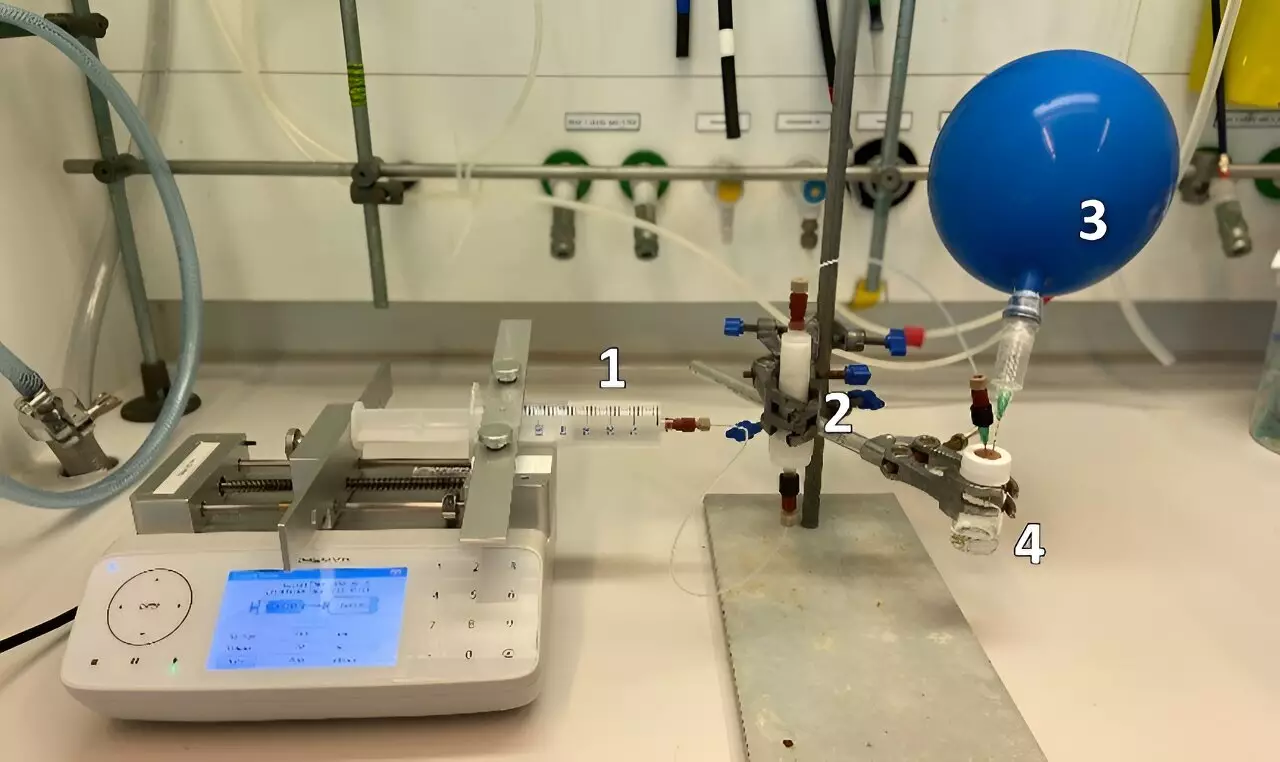Chemists at the University of Amsterdam have made significant strides in the field of organic chemistry by developing a method to incorporate a trifluoromethyl group into molecules without the use of PFAS reagents. This groundbreaking procedure, recently published in Science, offers a sustainable synthesis route for pharmaceutical and agrochemical compounds that benefit from the presence of the trifluoromethyl group. Led by Prof. Timothy Noël, the Flow Chemistry group at the Van ‘t Hoff Institute for Molecular Sciences collaborated with researchers from Italy, Spain, and the UK to achieve this environmentally friendly approach.
The innovative method developed by the research team involves utilizing the principles of flow chemistry, where reactions occur within closed systems of small tubes. This approach not only ensures safe and controlled chemistry but also provides increased versatility and flexibility compared to traditional chemical glassware methods. By avoiding the use of PFAS compounds, which are subject to future legislation, the synthesis protocol offers a more sustainable alternative for introducing fluorine atoms into molecules.
The trifluoromethyl (-CF3) group plays a crucial role in enhancing the hydrophobicity and metabolic stability of pharmaceutical and agrochemical compounds. This modification improves the efficacy of these compounds, allowing for lower required doses or concentrations. The ability to introduce the CF3 group through a sulfur, nitrogen, or oxygen atom offers unique features to drug molecules and agrochemicals, impacting their lipophilicity, oxidation resistance, and acid-base properties.
The researchers have developed a versatile microfluidic flow module for generating reactive CF3 anions through sulfur, nitrogen, or oxygen atoms. This module utilizes a packed bed flow reactor containing cesium fluoride salt as the fluorine source. By passing appropriate precursors through the reactor, efficient fluorination is achieved due to the high surface area of the salt and improved mixing of organic intermediates. Importantly, this approach enhances safety by containing all formed intermediates within the microfluidic system.
The integration of the anion generating module with a downstream reaction module enables the coupling of CF3 anions with suitable substrates to produce pharmaceutical and agrochemical active ingredients. This streamlined platform for the derivatization of molecules bearing CF3 motifs has the potential to revolutionize the development of new pharmaceutical drugs. By enhancing their properties and improving safety and sustainability in the production processes, this innovative approach offers promising prospects for both academia and industry.
The environmentally friendly synthesis method developed by the chemists at the University of Amsterdam represents a significant advancement in the field of organic chemistry. By providing a sustainable alternative to traditional synthesis routes using PFAS reagents, this approach not only benefits the pharmaceutical and agrochemical industries but also contributes to a more environmentally conscious approach to chemical synthesis. The integration of flow chemistry principles and microfluidic technology opens up new possibilities for the development of safer and more efficient drug molecules and agrochemicals.


Leave a Reply